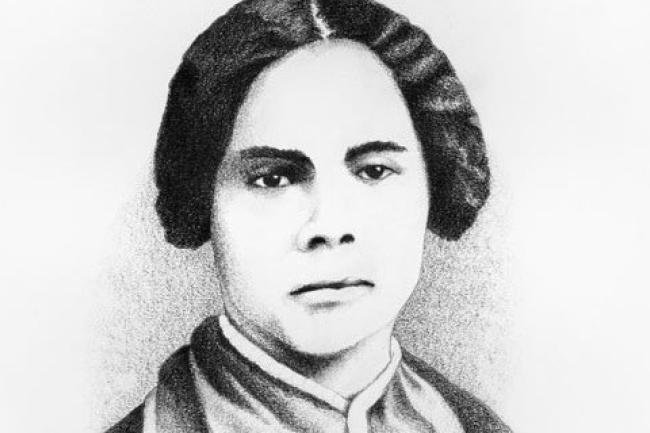The Life and Legacy of Mary Ann Shadd
Photo Credit: Howard University
Over the course of Black History Month in February and Women's History Month in March, reflecting on the people who made a significant impact on our society has been especially important. Mary Ann Shadd (1823–1893), was the first African-American female to publish and edit a newspaper in Canada: The Provincial Freeman.
Being black and female in the 19th century, Shadd grew up witness to how African- Americans were being treated. Though not a slave herself, her childhood home was a stop for many African-Americans seeking freedom through the Underground Railroad. Growing up, she became passionate about fighting for the equal rights of black people, fighting for the abolition of slavery, and promoting emigration to Canada West through her published work A Plea for Emigration.
“We have been holding conventions for years — we have been assembling together and whining over our difficulties and afflictions, passing resolutions on resolutions to any extent,” Shadd wrote in a letter to statesman Frederick Douglas when he asked for feedback on how life could be improved for black people in the United States. “But it does really seem that we have made but little progress considering our resolves.”
At the age of 10, Shadd and her family moved to West Chester, Pennsylvania where she and her siblings could have access to a proper education, which wasn’t yet available for black people in Delaware.
Drawing from the experiences she had growing up, Shadd dedicated much of her life to fighting for the equal rights of black people in the United States. She also worked towards the equal rights of women and became part of the suffrage movement by joining the National Woman Suffrage Association (NWSA).
At the time two main movements were happening: the fight toward suffrage for black men and the fight toward suffrage for white women. Shadd focused on advocating for black women. She demonstrated that though she cared about both movements, there was also a perspective that was missing: that of black women.
In 1876, when the Declaration of the Rights of Women of the United States was created by Susan B. Anthony, Matilda Joslyn Gage, and Elizabeth Cady Stanton on behalf of the NWSA, she petitioned to include signatures from 94 African-American women, wanting representation of black women in the declaration. In 1878, she was also a speaker at the NWSA convention.
Though women didn’t receive the right to vote in the United States until 1920, Shadd is one of the important people who advocated for suffrage in the earlier years.
Often when we learn about the suffrage movement, we learn about people who were involved in the “last push” of the movement — the people involved just before women were given the right to vote. However, the movement started long before the 1920s and is a continuing part of history.
Shadd was especially significant because there were very few black women able to participate in the suffrage movement. During big parts of the movement, such as the Seneca Falls Convention, black people were left out. It wasn’t until the Voting Rights Act was passed, prohibiting racial discrimination in voting, that black women were allowed to vote in the US without facing discrimination when they arrived at the polls.
As a journalist in the 19th century, Shadd was in a position usually held by men.
At the time, it was unheard of to have women in journalistic positions, but she challenged this idea by founding her own paper. In doing so, she was able to have her own values and decide how she wanted them to be shared.
However, this did not mean people respected her work, especially at the beginning. When the first issue was printed and shared with the public, two male names were printed on the masthead instead of her own. Shadd wanted her paper to be successful and she thought by doing this, there would be more people willing to read her paper.
She also stood out because of her work in investigative journalism. After Shadd, in the 20th century, there did start to be more women in journalism. However, they were typically assigned to write on topics such as cooking, housekeeping, and fashion- common stereotypes of women at the time. Shadd stood out by reporting on topics that mattered to her, and calling out the racial injustices and gender inequalities that people were facing.
“Shadd wielded her pen like a mighty sword, not afraid to attack institutions or anything and anybody she believed was engaged in wrongdoing,” described the Canadian Encyclopedia.
Though Shadd is most commonly remembered for her newspaper, The Provincial Freeman, she accomplished even more within her lifetime.
After moving to Pennsylvania for educational opportunities, she returned to her hometown of Delaware to open a school for African-American children. By 1850, she’d been teaching in various towns for over 10 years.
In 1883, she graduated from Howard University with a law degree, making her the second black woman in the United States to earn that degree.
Though Shadd achieved a great deal within her life and is a large part of both Canadian and US history, her legacy was forgotten for a long time. Even though she was often met with criticism because of the more “progressive” messages she promoted, she still managed to achieve greatness. Her ambition to go outside the status quo allowed her to pave the path for many to come, making advancements for black people, women, and the intersectionality of the two.

